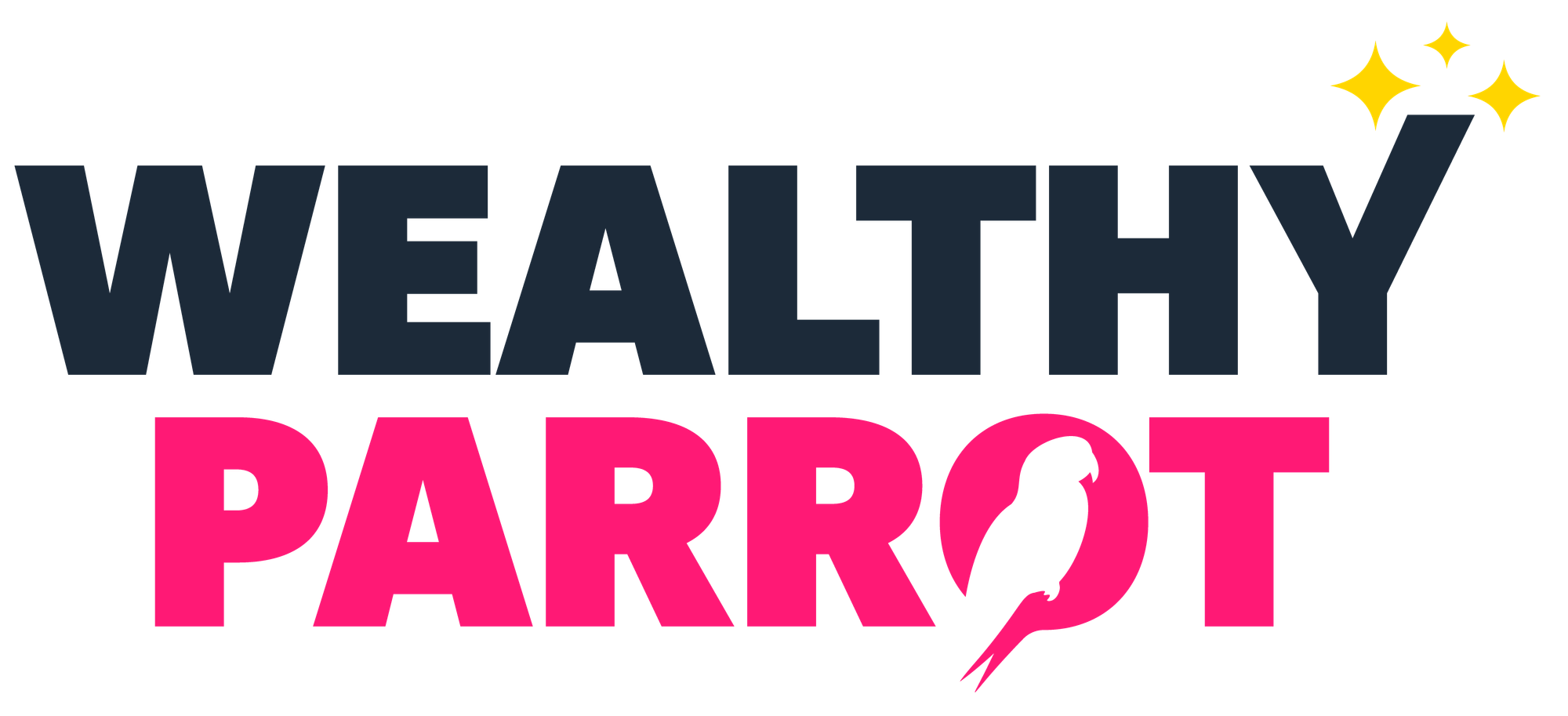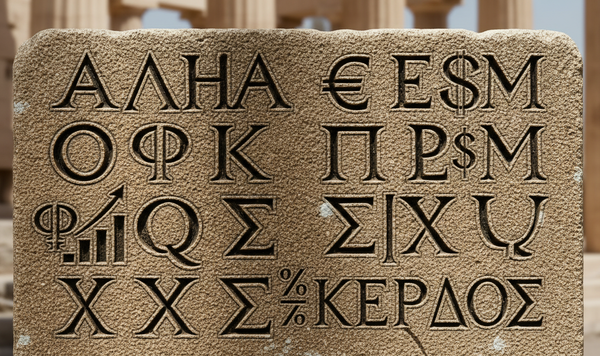The psychology of saving: why we spend more than we should - Part II

Hello! There is a chance that if you a reading this, you missed the first part of the article. Don't worry, you can read it here.
After covering the cognitive biases that influence us when spending and (not) saving, we'll cover other triggers, because yes.. unfortunately there is more that can influence us. We'll then go over what tactics you can use to stay away from these triggers and improve your savings.
Psychological triggers - both internal and external - can prompt episodes of impulsive or excessive spending, often derailing saving intentions.
Internal drivers: emotions and mood
Financial decisions are rarely made in an emotional vacuum. Whether you're feeling down, stressed out, bored, or even super happy and celebratory, those feelings can hijack your spending decisions. This whole "shopping to feel better" thing even has a nickname: "retail therapy." Even feeling anxious about money can sometimes make you spend more impulsively, maybe because you're trying to avoid the stress or just want a quick hit of "I'm in control" (even if it's just controlling the 'Add to Cart' button).

While that shopping spree might give you a temporary buzz, like a sugar rush, it doesn't actually fix why you were feeling crummy in the first place. It's a distraction, not a solution. Worse still, that temporary relief often comes with a nasty hangover – think credit card bills piling up or savings dwindling. Suddenly, the thing you did to feel less stressed ends up causing more financial stress. It’s a vicious cycle.
External nudges: marketing, environment, and availability
Advertisers are wizards at using psychology to get you reaching for your wallet.

- The "Bargain" illusion (anchoring): we got a hint of this before, but it can also be triggered externally when they show you a ridiculously high original price, so the sale price looks like the deal of the century. Suddenly, $100 seems cheap for that gadget!
- The FOMO fuel (scarcity/urgency): "Only 3 left!" or "Sale ends tonight!" triggers that fear of missing out, pushing you to buy now.
- The "Cool kids" connection (association): they link products to happiness, success, or that dreamy lifestyle you saw on Instagram. Buy this car, get this amazing life (spoiler: life sold separately).
- The spotlight stealer (isolation effect): making one product stand out so much (maybe it's brighter, bigger, or just different) that you barely notice the others. Sneaky, right?
- The "I know that one!" reflex (availability heuristic): You see a brand everywhere, so when it's time to buy, your brain goes, "Ah yes, old reliable brand X," assuming it's the best choice just because it's familiar.
It's not just the ads. The world around us, both physical and digital, is often set up like a giant shopping mall. Stores arrange aisles to make you walk past tempting goodies, while online shops offer that dangerously easy "one-click buy." Add social media feeds parading everyone else's latest purchases, and it's hard not to feel the pressure.
The digital world especially turns up the heat with 24/7 access and the promise of getting stuff almost instantly. Need more temptation? How about super easy credit? Getting loans or credit cards is often so simple it removes the immediate "oof, my bank account" feeling, making it way easier to cave to those spending urges, whether they bubble up from inside or get poked by an ad.
Beyond explicit advertising, the physical and digital environments are structured to facilitate spending. Store layouts are designed to maximize exposure to products, online shopping platforms offer seamless one-click purchasing, and social media feeds constantly showcase the consumption habits of others. The digital economy, in particular, amplifies spending triggers through constant accessibility and the promise of instant gratification. Furthermore, the widespread availability and easy access to credit remove immediate budget constraints, making it easier to act on spending impulses triggered by internal feelings or external cues.
All these clever ads, easy-peasy shopping environments, and readily available credit create what the smart folks call a "choice architecture." Fancy term, simple meaning: the whole setup is basically tilted to make spending the easiest option. In our modern world, spending often feels like sliding downhill - it’s the path of least resistance.
Saving, on the other hand? That often feels like hiking uphill, in the mud, carrying weights. It takes deliberate effort, planning, and actively dodging all those environmental nudges and slick marketing ploys designed to separate you from your cash. The default setting, thanks to our surroundings, is usually "spend." Recognizing that tilt is the first step to navigating it!
Society's influence: keeping up appearances
Individual saving and spending behaviors are not formed in isolation; they are deeply embedded within and influenced by broader societal norms, cultural values, and social interactions.
The upgrade olympics: more is more?
Modern culture often equates happiness and success with owning stuff. Ads constantly tell us new things bring joy, implying what we already have isn't good enough. Society seems to cheer louder for visible spending than quiet saving. Sometimes, it feels like keeping up appearances through spending is required for social respect, pushing us to overspend and ignore long-term needs.
Keeping up with the Joneses (digitally)
Then there's our natural instinct to compare ourselves to others (Social Comparison Theory). Financially, we gauge our well-being against peers, colleagues, or media portrayals. Seeing others' lifestyles creates pressure to "keep up," leading to spending beyond our means just to fit in or feel adequate. This easily becomes "herd behavior"—buying stuff just because it's popular. Breaking free from this financial follow-the-leader is key.
Social media: comparison overload
Social media throws gasoline on this comparison fire. Platforms showcase curated, often idealized, versions of people's consumption – lavish trips, expensive goodies, effortless lifestyles. This constant stream of perfection creates unrealistic benchmarks and intensifies spending pressure. Seeing everyone else's apparent affluence makes it harder to feel content and makes saving seem less socially rewarding than conspicuous consumption. Resisting that herd mentality is tougher when the "herd" is constantly visible online, making saving feel almost like a rebellious act against the current.
Payment methods and spending psychology
The way individuals pay for goods and services is not merely a transactional detail; it has a demonstrable psychological impact on spending levels and saving discipline.
The "Pain of paying"
When you pay using physical cash, it's tangible. You see the money leave your hand. There's a real sense of "oof, that's gone now." This feeling, sometimes called the "pain of paying," acts like a natural speed bump for your spending. It makes the transaction real and immediate, potentially making you think twice before buying that extra thing you didn't really need.
Cash vs cards vs digital
In contrast to cash, less tangible payment methods tend to reduce the pain of paying, making spending easier and often leading to higher expenditure levels.
- Credit cards - the sneaky spenders: ever wonder why it feels easier to splurge with plastic? You're not alone! Research and common wisdom suggest people often spend more using credit cards compared to cash - some studies even suggest it could be up to 16% more! Why? Credit cards cleverly separate the joy of getting something now from the pain of paying later. The transaction is less physical, less real in the moment. That ease, combined with readily available credit lines, makes it dangerously simple to act on impulse buys. It's a classic example of our brains tricking our budgets!
- Digital payments - Almost too easy?: mobile wallets, payment apps, saved card details online, contactless taps... these methods make spending incredibly frictionless. A simple click or tap, and it's done! There's often less immediate feedback on your dwindling funds compared even to swiping a card. This near-effortless spending can seriously boost impulsivity. Think about virtual currencies in games or apps – they create such a mental gap from real money that spending can feel completely detached from reality.
- Connection to mental accounting: the way different payment methods are perceived can also interact with mental accounting. Using a credit card might feel less like spending "one's own money" from a specific budget category and more like drawing on a separate line of credit provided by the bank, further reducing the perceived immediate impact on personal finances.
As money transforms from physical cash to plastic cards to invisible digital blips and virtual tokens, the psychological sting of spending weakens. That vital link between the act of buying and the reality of your money decreasing gets fuzzier.
This "abstraction" diminishes the natural self-control that comes with the pain of paying. Spending feels less significant in the moment, leaving us more vulnerable to those emotional spending triggers, clever marketing cues, or biases like wanting instant gratification. We become less mindful of our spending and those important long-term saving goals get pushed aside. So, that seemingly small choice at the checkout? It actually matters quite a bit!
Behavioral solutions: strategies for enhanced saving
After this (long) overview of all things that could make us jeopardize our savings, you'd think there is no hope. But fear not, behavioral finance gives us some sneaky-smart ways, often called "nudges," to gently push ourselves towards saving more without feeling like we're missing out. It’s like setting up little tripwires for your bad habits.
Here are some proven strategies, straight from the brainiacs who study this stuff.
1.The magic of "Set it and forget it" saving
Seriously, if you do only one thing, do this: Automate your savings. Like, right now. Set up an automatic transfer from your checking account to your savings or investment account the day you get paid. Sign up for your workplace retirement plan, especially if it has automatic enrollment. Why does this work so well? Because it taps into the awesome power of inertia (aka laziness, but let's call it efficiency).
When saving just happens without you needing to actively decide every single time, you sidestep a bunch of mental traps: procrastination ("I'll do it next month"), decision fatigue ("Ugh, too many choices"), and that pesky present bias ("But I want it now!"). It's like setting your thermostat – you don't constantly fiddle with it; you set the desired temperature and let it do its thing. You're essentially putting your financial goals on autopilot towards Successville.
2. Make "Future you" your best bud
Saving for something far off, like retirement, can feel abstract. "Future Me" is chilling on a beach somewhere, right? Who cares about them when "Present Me" wants pizza? The trick is to make that future feel real and immediate.
- Get SMART: don't just vaguely "want to save." Set Specific, Measurable, Achievable, Relevant, Time-bound goals. "Save €100/month for a down payment for the next 2 years" beats "Save more" any day. It gives you a target.
- Time travel (mentally): visualize what that future goal looks like. Imagine yourself enjoying that debt-free life or traveling the world in retirement. Use online calculators that show how your money could grow. Make Future You someone you're excited to provide for.
- Pinky promise your future self: use commitment devices. Decide now that you'll save 50% of your next bonus or raise. Locking it in beforehand makes follow-through way more likely.
- Check the scoreboard: regularly peek at your progress. Seeing those savings pile up is surprisingly motivating!
3. Outsmart your inner spender (budgeting without tears)
Let's be real: traditional budgeting can be a drag. But we can use behavioral tricks to make managing money less painful and more effective.
- Give your money jobs: try "mental accounting." Consciously label chunks of your money for specific goals ("Emergency fund," "Guilt-free fun money," "Dream vacation stash"). Once money has a specific job in your head, you're less likely to spend it on random impulses.
- Pause before purchase: practice mindful spending. Before you buy, especially on impulse, take a breath. Ask: Is this a need or a want? Will I still value this in a month? Does it align with my bigger goals? Try the "30-day rule" - wait 30 days for non-essential purchases. You'd be surprised how often the urge just vanishes.
- Institute a cooling-off period: for bigger financial decisions, step back. Let the initial emotional rush subside so you can evaluate more logically. Don't let flashy marketing or initial prices anchor your decision.
- Collect moments, not just things: research suggests spending on experiences often leads to more lasting happiness than buying material goods. Maybe redirect some spending towards making memories?
4. Design your environment for success (nudges!)
The way choices are presented drastically affects what we choose. You can be your own "choice architect."
- Frame it fabulously: think of your employer's 401(k) match as "instant free money" (because it is!). Positive framing helps!
- Simplify, simplify: too many complex investment choices? Overwhelm leads to inaction. Sometimes fewer, clearer options are better.
- Make saving easy street: structure things so saving is the path of least resistance. If you have to actively opt-out of saving, you're more likely to just stay in.
5. Know your brain's quirks (become a bias detective)
Awareness is step one! Just knowing about common mental shortcuts (cognitive biases) helps you spot them in action.
- Level up your knowledge: financial literacy boosts your understanding and confidence.
- Play devil's advocate: actively challenge your own assumptions. Seek out reasons why an investment might fail (countering confirmation bias). Look at the actual odds, not just compelling stories (countering availability heuristic). Judge value objectively, not based on the first price seen (countering anchoring).
6. Beat the "New car smell" fade-out (Hedonic adaptation)
Remember how exciting that new phone/car/outfit was? And how quickly that excitement faded? That's hedonic adaptation – we get used to stuff, and the happiness boost evaporates, leaving us wanting the next thing.
- Practice gratitude: make a conscious effort to appreciate what you already have – your health, your relationships, your home. Contentment is a powerful antidote to consumerism.
- Seek inner wins: focus on goals like personal growth, learning, relationships, and community involvement. These often provide more sustainable well-being than purely material pursuits.
- Savor the good stuff: don't binge all your pleasures at once. Space out enjoyable purchases or experiences. Anticipation and savoring can actually make the enjoyment last longer!
By using these behavioral nudges, you're not fighting your nature; you're working with it to build a stronger financial future, one clever step at a time. Now go outsmart those squirrels!
Conclusion: towards financial well-being
So, we've journeyed through the wacky world of our money brains, and let's be honest, it's kinda wild in there, right? If you've ever felt like saving money is harder than resisting a "buy one, get one free" offer on something you absolutely don't need, you're not alone, and you're definitely not broken!
The reality is, our noggins are stuffed with little gremlins called cognitive biases that mess with our financial mojo. We've got:
- Present bias: that pesky voice screaming "YOLO, buy the concert tickets!" even when Future You needs rent money.
- Loss aversion: why losing £20 feels way worse than finding £20 feels good, making us scaredy-cats with investments.
- Anchoring: getting fixated on the first price tag we see, even if it's totally random.
- Mental accounting: treating windfall cash differently than earned cash (hello, bonus money evaporating!).
- Hedonic adaptation: the official term for "Why am I bored with this awesome thing I bought last week?"
Toss in impulsive feelings, the pressure to keep up with the Joneses (who are probably broke anyway), and super-smooth payment apps that make spending feel like swiping on a dating app, and bam! It's no wonder saving feels like swimming upstream against a tidal wave of temptation. It's less about weak willpower and more about navigating a psychological obstacle course designed to make us spend.
But wait! Don't throw your hands up in despair and order that giant inflatable flamingo just yet. Recognizing these mental tripwires is actually your secret weapon! Knowing your brain tends to pull these fast ones is the first giant leap towards outsmarting them. It's like knowing the cheat codes to your own life.
Armed with this awareness, you can deploy those clever strategies we talked about:
- Put savings on autopilot (your future self will thank you profusely).
- Make your future goals so vivid, they feel like they're happening next week.
- Practice mindful spending (take a breath before you click!).
- Get advice from someone who isn't trying to sell you magic beans.
- Design your environment (your apps, your accounts, your mindset) to gently nudge you towards saving.
Think of it as building a financial life raft designed specifically for your brain's quirks.
Ultimately, getting good with money isn't just about crunching numbers or making fancy spreadsheets (though those can help!). It’s really about understanding yourself – knowing the little mental shortcuts and emotional triggers that shape how you deal with dollars and cents. By acknowledging these weird brain habits and using savvy strategies to manage them, you can navigate this crazy financial world with more confidence, make choices that actually support the future you dream of, and finally achieve that awesome sense of financial peace of mind. You've got this! Squawk!🦜





